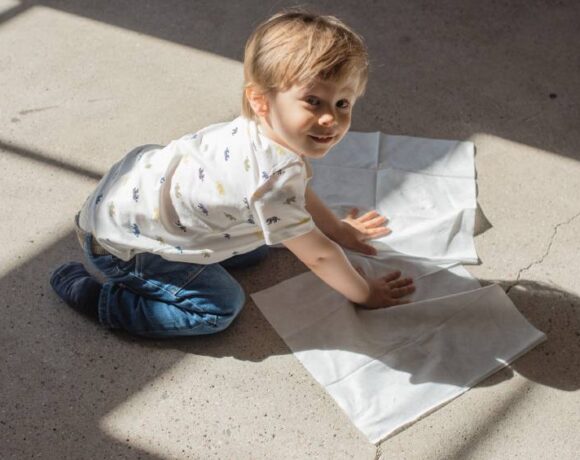Innovations In Non-Woven Technology: What’s Changing The Game?

Non-woven technology has revolutionized various industries with its versatile applications, ranging from medical textiles to automotive components. As the demand for sustainable and efficient materials continues to rise, innovations in non-woven technology are accelerating, promising significant improvements in performance, environmental impact and cost-effectiveness. In this exclusive article, Rohit Dev Sethi explores the latest advancements in non-woven technology and their potential to transform industries.
1. Introduction to Non-Woven Technology
Non-woven fabrics are engineered materials made from fibres bonded together through chemical, mechanical, thermal or solvent means. Unlike traditional textiles, non-woven materials do not require weaving or knitting, allowing for more rapid production and cost-effective manufacturing processes. These materials are widely used in various applications, including hygiene products, medical supplies, filtration systems, automotive interiors and geotextiles
2. Advanced Fibre Technologies
a. Biodegradable and Bio-based Fibres
One of the most significant trends in non-woven technology is the development of biodegradable and bio-based fibres. As environmental concerns grow, there is an increasing demand for materials that can reduce the ecological footprint. Innovations in this area include:
- Polylactic Acid (PLA) Fibres: Derived from renewable resources like corn starch or sugarcane, PLA fibres are biodegradable and compostable. They offer excellent mechanical properties and are used in various applications, such as disposable hygiene products and agricultural fabrics.
- Cellulose-Based Fibres: Produced from natural sources like wood pulp, cellulose fibres are not only biodegradable but also exhibit good absorbency and strength. Recent advancements have improved their processing and performance, making them suitable for medical textiles and wipes.
b. High-Performance Synthetic Fibres
To meet the demanding requirements of industries like automotive and construction, high-performance synthetic fibres have been developed. These fibres offer superior strength, durability and resistance to chemicals and heat. Notable innovations include:
- Polyphenylene Sulfide (PPS) Fibres: Known for their exceptional chemical and thermal resistance, PPS fibres are used in filtration systems and high-temperature applications.
- Aramid Fibres: With high strength and resistance to abrasion and heat, aramid fibres are utilized in protective clothing, automotive components and aerospace applications.
3. Innovative Bonding Techniques
The way fibres are bonded in non-woven fabrics greatly influences their properties and performance. Recent advancements in bonding techniques have led to the development of materials with enhanced characteristics.
a. Spunlace Technology
Spunlace, or hydro-entanglement, uses high-pressure water jets to entangle fibres, creating a fabric with excellent softness, drapability and strength. This method is increasingly used in medical textiles, wipes and hygiene products. Innovations in spunlace technology include:
- Patterned Spunlace: By varying the water jet patterns, manufacturers can create non-woven fabrics with unique textures and properties, enhancing their aesthetic appeal and functionality.
- Hybrid Spunlace: Combining spunlace with other bonding methods, such as thermal bonding, results in materials with improved performance characteristics.
b. Ultrasonic Bonding
Ultrasonic bonding uses high-frequency sound waves to bond fibres thermally. This method is fast, energy-efficient and eliminates the need for adhesives or chemicals. Recent developments in ultrasonic bonding have led to:
- Improved Bonding Strength: Advances in ultrasonic equipment and techniques have enhanced the bonding strength and uniformity, making it suitable for high-performance applications.
- Versatile Applications: Ultrasonic bonding is now used in a wider range of products, including automotive interiors, filtration media and protective clothing.
4. Functional Additives and Coatings
To enhance the functionality of non-woven fabrics, various additives and coatings are incorporated during the manufacturing process. These innovations add value by imparting specific properties to the materials.
a. Antimicrobial and Antiviral Treatments
With the increased emphasis on hygiene and safety, antimicrobial and antiviral treatments have become crucial in non-woven fabrics used in medical and hygiene products. Innovations in this area include:
- Nano-Silver Coatings: Utilizing the antimicrobial properties of silver nanoparticles, these coatings effectively inhibit the growth of bacteria and viruses on the fabric surface.
- Chitosan-Based Additives: Derived from natural sources like crustacean shells, chitosan is a biocompatible and biodegradable antimicrobial agent used in medical textiles and wound dressings.
b. Flame-Retardant Treatments
For applications requiring enhanced fire safety, flame-retardant treatments are essential. Recent advancements have focused on developing more effective and environmentally friendly flame retardants, such as:
- Phosphorus-Based Flame Retardants: These additives provide excellent flame resistance while being less harmful to the environment compared to traditional halogenated flame retardants.
- Intumescent Coatings: When exposed to heat, intumescent coatings form a protective char layer, enhancing the fire resistance of non-woven fabrics used in construction and automotive applications.
5. Sustainable Manufacturing Processes
Sustainability is a key driver of innovation in non-woven technology. Manufacturers are adopting eco-friendly processes to minimize the environmental impact of production.
a. Recycling and Reuse
Advancements in recycling technologies have enabled the reuse of non-woven materials, reducing waste and conserving resources. Innovations include:
- Post-Consumer Recycling: Non-woven fabrics from used products, such as hygiene items and medical textiles, are collected, processed and transformed into new materials, closing the loop in the product lifecycle.
- Industrial Waste Recycling: Waste generated during the manufacturing process is recycled back into the production line, minimizing raw material consumption and reducing landfill waste.
b. Green Chemistry
Green chemistry focuses on using environmentally friendly chemicals and processes in the production of non-woven fabrics. Innovations in this area aim to reduce the use of hazardous substances and improve the sustainability of manufacturing:
- Water-Based Adhesives: Replacing solvent-based adhesives with water-based alternatives reduces volatile organic compound (VOC) emissions and enhances worker safety.
- Biodegradable Binders: Developing binders that break down naturally in the environment without leaving harmful residues contributes to the sustainability of non-woven products.
6. Smart Non-Woven Fabrics
The integration of smart technologies into non-woven fabrics is opening up new possibilities for innovative applications. These smart fabrics can sense, respond and adapt to environmental stimuli.
a. Conductive Non-Wovens
Conductive fibres and coatings are incorporated into non-woven fabrics to create materials capable of transmitting electrical signals. Applications of conductive non-wovens include:
- Wearable Electronics: Conductive non-wovens are used in wearable devices, such as smart clothing and health monitoring systems, enabling real-time data collection and communication.
- EMI Shielding: Non-woven fabrics with conductive properties provide electromagnetic interference (EMI) shielding in electronic devices, enhancing their performance and reliability.
b. Phase Change Materials (PCMs)
PCMs are incorporated into non-woven fabrics to regulate temperature by absorbing, storing and releasing heat. Innovations in PCM technology include:
- Microencapsulation: Encapsulating PCMs in microscopic shells prevents leakage and allows for controlled heat management, making them suitable for thermal insulation and temperature-regulating textiles.
- Dual-Function Fabrics: Combining PCMs with other functional additives, such as antimicrobial agents, results in multi-functional non-woven fabrics with enhanced performance.














